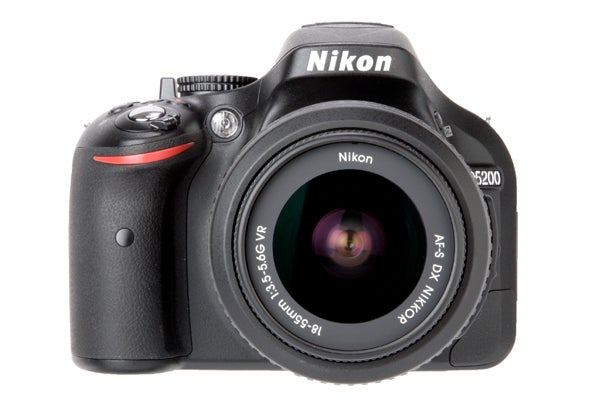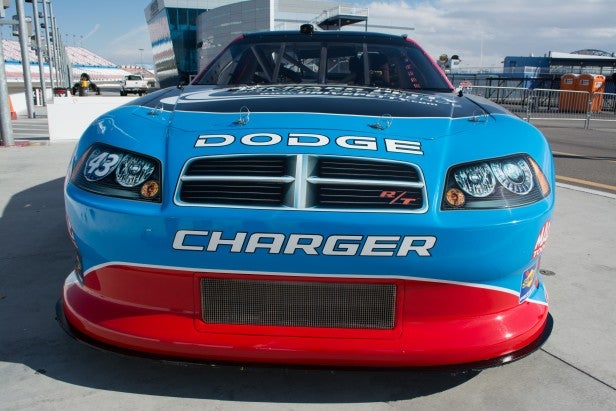Nikon D5200 Review - Image Quality Summary and Verdict Review
Image Quality Summary and Verdict
Nikon's latest entry-level DSLR offers an impressive feature set and great image quality

Sections
- Page 1 Nikon D5200 Review
- Page 2 Design and Performance Review
- Page 3 Image Quality: ISO Tests Review
- Page 4 Image Quality: Real World Tests Review
- Page 5 Image Quality Summary and Verdict Review
![]()
Nikon D5200: Image Quality
Tone and Exposure
Employing the same 2,016-pixel RGB sensor that’s used in the D7000, the D5200 offers a choice of Matrix, Center-weighted and Spot metering modes. With the camera set to Matrix mode for general shooting, the D5200 produces images that appear to be well exposed on-screen, with closer inspection of the histograms in Photoshop and Camera Raw proving this to be the case. While the D5200 offers up to /-5EV of exposure compensation we rarely found ourselves needing to use any. In addition to EV compensation the D5200 also offers Nikon’s own Active-D Lighting technology, which aims to restore more detail in high-contrast scenes via in-camera processing. Six levels of strength are available in total: auto, extra high, high, normal, low and off. 
White Balance and Colour
Images produced by the D5200 are bright and vibrant, with very lifelike colour accuracy. We did find that JPEGs are fractionally more saturated than their Raw counterparts though, no doubt as a result of the in-camera processing. As with all Nikon DSLRs the D5200 allows you to take control over the effects of this processing via the Picture Control options. Within the Picture Control sub-menu you’ll find options for: Standard, Neutral, Vivid, Monochrome, Portrait and Landscape. During testing we tended to stick with the Standard and Neutral settings as these produce the most faithful results. Colour saturation remains vibrant even when the camera is set to higher sensitivities, although at ISO 25,600 images take on a subtle magenta cast.
Sharpness and Detail
The D5200’s 24.1MP sensor delivers impressive levels of detail, especially when a premium lens in employed. Attached to our Sigma 105mm f/2.8 EX DG test lens, the D5200 managed to resolve 32 lines per millimetre on our resolution chart at ISO 100, with the aperture set to its sweet spot of f/8. This allows plenty of scope for cropping tightly into images without detrimentally affecting image quality. 
ISO Performance
Given the high pixel count, we were especially interested to see how the D5200 performed at high sensitivity settings. The good news is that it handles luminance and colour noise commendably. It’s not until you push beyond ISO 800 that you begin to notice traces of noise creeping in to images, and then only when they’re viewed at 100%. ISO 1600 and 3200 are both perfectly useable too, as is ISO 6400, although you will need to move the luminance noise reduction slider to 35 within Adobe Camera Raw. If possible it’s best to steer clear of the extended settings; chroma noise becomes more obvious at ISO 12, 800 while ISO 25,600 also has an adverse affect on edge sharpness.
Nikon D5200: Verdict
Costing £649 body only, or £719 with the 18-55mm VR kit lens, the D5200 currently costs around £320 more than the equivalent D5100 package. The developments to the D5200’s internal specification – most notably the 39-point AF system and 24.1MP sensor – result in a truly impressive specification for a consumer model. It delivers stunning image quality and is a pleasing camera to use, but is it really worth the additional £300 or so? Well, if you plan on taking advantage of the higher resolution, 50i video frame rate and Wi-Fi compatibility with the optional WU-1a adapter, then yes it is. However if you can survive without these features and feel that the D5100’s 11-point AF system is adequate for your needs, then the D5100 may well be a better bet. To surmise, the D5200 is a worthy addition to Nikon’s APS-C DSLR range that borrows some features and specifications from the more expensive Nikon D7000 to bring additional functionality to a smaller and more affordable model. For these reasons, we’re only too happy to award it a TrustedReviews ‘recommended’ badge.
Trusted Score
Score in detail
-
Value 8
-
Design & Features 8
-
Image Quality 9
-
Build Quality 8


